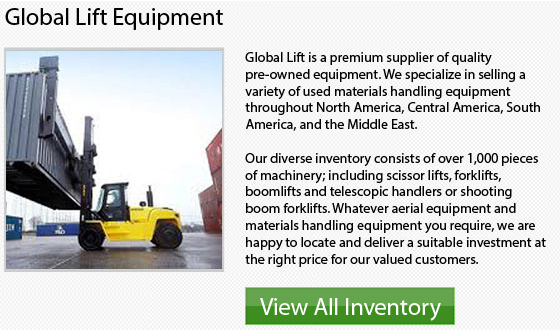
Caterpillar Large Capacity Forklifts Fort Worth
History of Forklifts
Forklift technology provides the capacity to transport bulky or heavy objects easily across short distances. Forklifts are commonly utilized in the every day operations of various types of businesses. Forklift design is always going through improvement as technology advances.
During the early 20th century, at the beginning of the industrial era within America, the forklift was invented. A company called Clark made the first truck tracker in the year 1917. It was developed for use inside Clark's very own plant, but when other people saw it they were very impressed with this lifting machine, even if it can only lift loads only a few centimeters off the ground. The following year, Clark began marketing the trucks widely.
The early models were extremely basic. By the year 1920, hydraulics was incorporated into the design. During 1923, Yale Baker developed an electric powered model with a pinion and ratchet system that cost less to operate. Pallets were developed as stackable surfaces on which to move supplies. This permitted bigger loads to be transported.
During the Second World War, more businesses moved into the materials handling industry in order to deal with increased demand. Companies, such as Hyster, went from producing other kinds of machinery to producing lift trucks. The U.S. Armed Forces increased demand for forklifts for the reason of bringing military supplies to the frontlines. The demand for longer lasting electric models resulted in the development of forklifts which could last for eight hours.
Forklifts have changed significantly over the course of their history. Businesses all around the globe require forklifts to lessen costs and increase production. Modern trucks are more comfortable and more productive and safer compared to their predecessors.
- Fantuzzi Container Forklift Fort Worth
Rail / Intermodal Reach Stacker Rail or Intermodal Reach Stackers manufactured by Fantuzzi would make fast work of difficult applications. The distances between the first and second rail will drastically vary depending on the task.... More - Taylor Rough Terrain Forklift Fort Worth
Rough Terrain Lift Truck Training Class VII or rough terrain forklifts are often used in logging and forestry projects and are common on construction sites. They are the popular option for outdoor settings which depend... More - JCB Zoom Boom Fort Worth
Raw Materials The cab, body, boom and frame of a telescoping boom rough terrain forklift are generally manufactured by a lift truck manufacturer. The most common material used for these subassemblies is steel, because of... More - Potain Self Erect Cranes Fort Worth
Tower cranes are being utilized often for big building construction projects. They are necessary for the heavy lifting and positioning of materials and machinery. Tower cranes provide a different design that offers a lot of... More - Yale LP Forklifts Fort Worth
You'll notice specific types and classes of forklifts available on the market. Once you have become familiar with the numerous models, it is easier to understand you lift truck application needs prior to choosing one.... More








